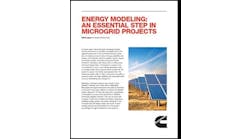Next time you step into an elevator, consider this: Elevators are responsible for 8 to 10 percent of a building’s energy use.
Before you start criticizing yourself for wasting energy, you might do a little investigating. Is this an older, creaky, slow-moving elevator? Or is it a new-fangled one that actually schedules and groups its riders by floor to increase efficiency? Is it possible that the elevator is run by state-of-the-art systems that harness energy from the braking system to boost efficiency?
If you’re in one of the newer models, brace yourself for a smooth, efficient and speedy ride.
Welcome to the new world of elevator technology, software and controls that will be installed in the 1 World Trade Center in 2015 by ThyssenKrupp Elevator. The company will install 73 elevators and 11 escalators using smart, speedy and sophisticated systems. Visitors will reach the 100th floor in one minute.
Traditional elevators are big energy hogs for reasons that may surprise their riders.
“Everyone assumes a big motor is what’s using the electricity. But actually, 60 percent of the energy is used in standby mode, with the air conditioning or ventilating running,” explained Andreas Schierenbeck, CEO and executive chairman, ThyssenKrupp Elevator.
The new, efficient elevators use a number of systems that can cut a building’s overall energy needs by up to 30 percent, he said. Not only are high-tech elevators more efficient; they can actually produce electricity.
The 1 World Trade Center elevators will be equipped with regenerative drive technologies that generate enough power to potentially feed the building’s lighting system. Like a hybrid car, they take advantage of energy produced by the braking system.
“At the moment the elevator is braking, you can generate energy and use it in the building,” said Schierenbeck. In the 1 World Trade Center, the elevators can generate energy to feed the entire lighting systems of the building, he said. This energy would have burned off in machine rooms that increase air-conditioning needs.
In addition, the elevators will use a smart system that groups riders going to the same destination. All elevators are connected through a central electronic dispatching system.
This prevents the stop-and-go associated with many people using an elevator at the same time; instead, each elevator is scheduled to go to one floor—with the people who want to go there—without a lot of stopping in between, he explained.
“It’s better to pool people, say, everyone who wants to go to Floor 11 go in cabin B and everyone who wants to go to Floor 10 go to cabin C,” he said.
Like many energy-efficient systems, the efficient elevators provide benefits that aren’t related to energy. Building tenants like the fact that they get to where they’re headed more quickly.
Given the huge amount of energy used by elevators—and the potential to cut this consumption significantly—you’d think that government incentives would be available for such systems.
“At this time, there are no direct government incentives, however incentives may be available through utility companies depending on a building’s location,” said a company spokeswoman. “For example, a building owner can present energy modeling based on energy improvements from an elevator modernization project; based on this, they may receive rebates aligned with estimated savings.”
Next time you get into an elevator, you’ve got a lot to think about: government incentives, regenerative braking, and state-of-the-art scheduling systems. Or you can simply save energy the easy way and take the stairs.
Interested in reading more stories about energy saving technologies? Subscribe to Energy Efficiency Markets free newsletter today.






